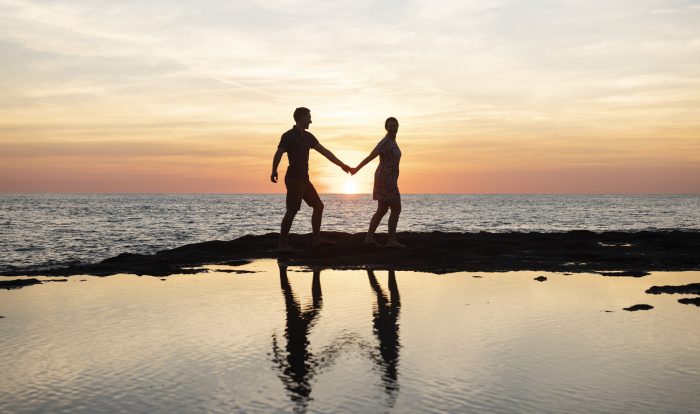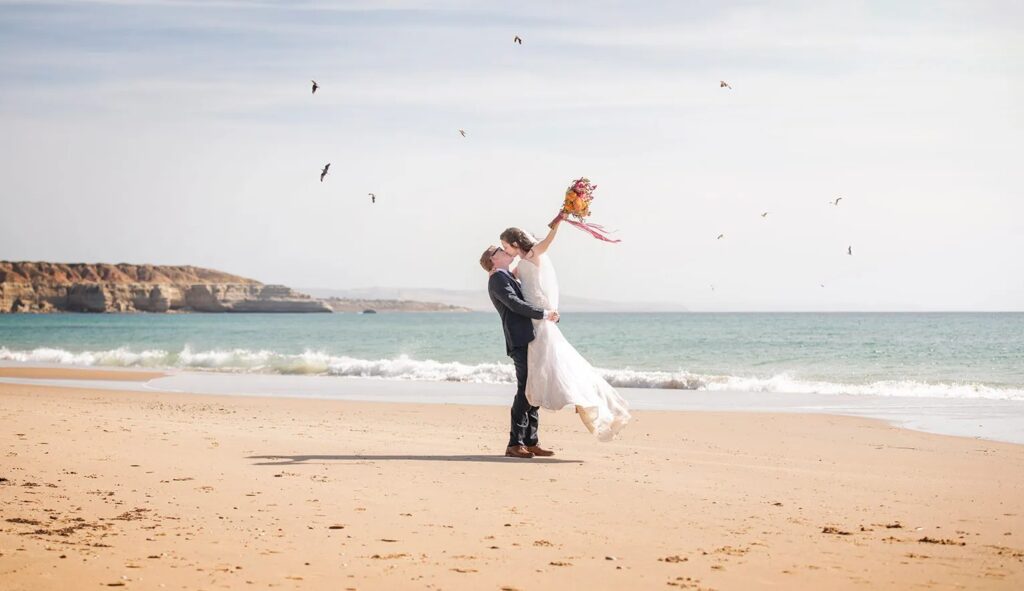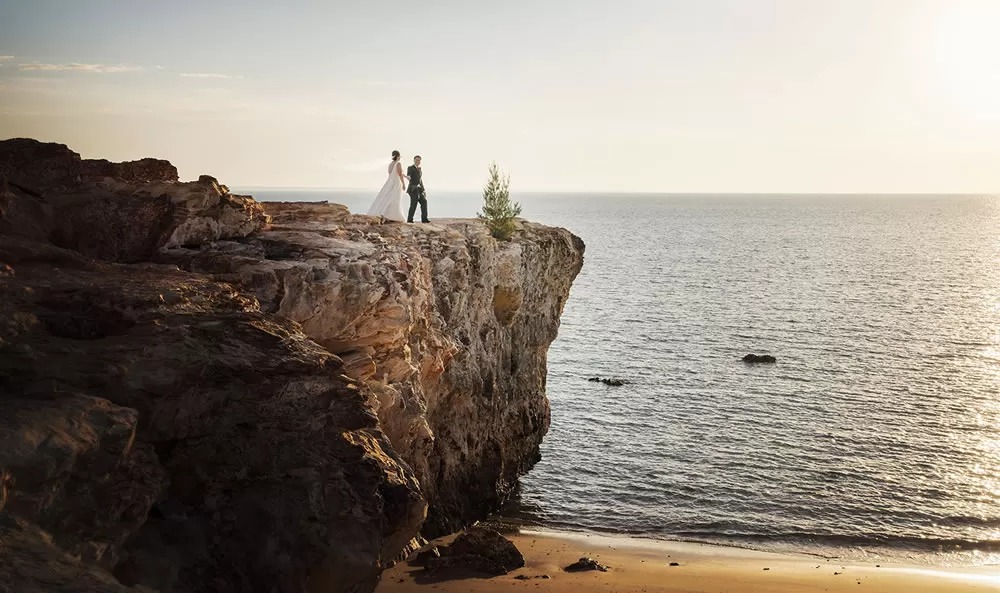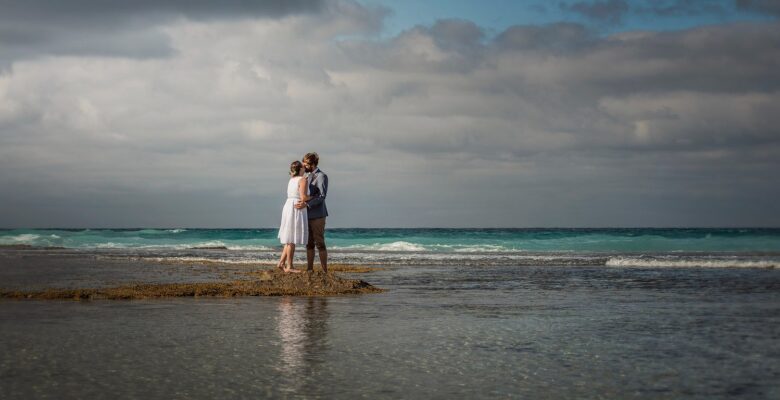Beach time is magic.
There’s something special about the beach, isn’t there? It’s not just the sun and sand or the brilliant blue of the sky overhead. It’s not just having a break from work or being able to relax with your friends and family. And it’s definitely more than just an excuse to eat ice cream for breakfast.
It’s about making memories that last a lifetime—those moments you’ll treasure forever. And what better way to capture those moments than with photos? There are so many beautiful things to see at the beach, from the rocky shores to the crashing surf and everything in between—not to mention all your friends and family enjoying their own fun in the sun!
But taking photos at the beach can be tough, whether you’re using a disposable camera or the latest DSLR. Without a little guidance, you could end up disappointed with how your photos turned out. That’s why we’ve asked SvenStudios‘ Master Photographer to share his tips for taking better photos at the beach so that your precious memories from this summer will last a lifetime!
Top 5 Tips to Take Better Photos at the Beach
Beach photography is all about capturing precious moments—the kind that only comes around once in a lifetime. Whether it’s a child’s first time at the beach or your grandmother’s hundredth, each moment is special and deserves to be taken with care. Beach photos are especially good at conveying the sense of spontaneity and joy that comes along with being on the beach. The ocean, sun, and sand provide such a beautiful backdrop that you can’t help but feel free to be yourself when you’re there.
We want to help you capture these moments as they happen, so we’ve compiled a few tips on how to do just that.

1. Time of Day
Have you ever had that perfect moment—one that you wished would just last forever? Maybe it was the first time you and your best friend took your new camera to the beach, or maybe it was the night in high school when you finally asked out your crush. You wanted to capture it, but as soon as you held up your camera, it was gone.
The truth is: photography is all about lighting—and the right lighting can make all the difference between a decent photo and a snapshot of memory worth keeping forever.
Most people think the ideal time to get that perfect shot is right around sunset—but actually, if you want those high-quality shots, you’re better off waiting until late in the day for golden hour.
Golden hour refers to that magical time just after sunrise and just before sunset, when the light is warm and golden (hence the name). It might seem counterintuitive not to take photos at sunset, but there’s something about those soft early morning rays that makes everything look so much more vibrant and alive than even the most perfect late afternoon sunsets.
If you really want great photos at a beach, I’d recommend taking them early in the morning!

2. What to Wear
It’s no secret that a great photo starts with how you look in the shot—and not just in the mirror, but in relation to your surroundings. The beach is one of those places where we all have the tendency to go overboard on color, pattern, and accessories. While it’s great to be bold, it’s also important to think about what you’re wearing in terms of the background and the overall vibe.
Here are some tips for dressing for your next beach photo op:
- When choosing a background, think about what kind of statement your outfit is making. Is it a loud print? A bright color? A statement piece? If so, try to match it with a less complex background.
- If you’re on a sandy beach, wear something that will complement the sand and water. If you’re at the beach in wintertime when the sand is grey and brown, try wearing a similar tone so that your outfit will blend more seamlessly into the surroundings—or wear something brighter so that you pop out!
- If you’re by water (like at a lake or river) that’s not as blue as ocean water, try matching your outfit to whatever hue it is. For example: if you’re at a river, wear slightly green-tinted clothing. If you’re at a lake, wear slightly blue-tinted clothing. If you’re in the desert, feel free to go with the traditional orange-y/reddish/brownish colors of the desert.
These colors will blend in with your surroundings so people who see your photos will be able to focus on you and your loved ones—not what you’re wearing.
If you don’t know what colors work best for photography, look to nature for inspiration: What colors do the plants and animals around you have? You can use those colors as models for your own!

3. Weather
The beach is an incredibly mysterious place—glassy water reflects a sky of endless possibility, and from sunrise to sunset, the clouds parade around in a sweeping variety of shapes and shades—a veritable feast for any budding photographer. If you’re looking for the perfect time to take your picture, here are some things to keep in mind:
Early morning is one of those times when it’s hard not to be inspired by the beauty surrounding you. The still water reflects soft light and paints a picture that is almost otherworldly. It’s also one of the quietest parts of the day at the beach—the only sounds you may hear come from birds waking up or an occasional jogger getting their exercise in before work. There is no better time to capture natural beauty than early morning!
The sun itself can serve as a gorgeous focal point for your photography. In fact, there are two very specific times when taking advantage of sunlight can result in stunning photos: “golden hours” (just after sunrise and before sunset) and midday on cloudless, sunny days. During golden hours, the lower position of the sun in the sky creates long shadows that add depth, dimension, and drama to your images. During the middle of the day, on the other hand, you can use the bright, direct light to create crystal clear images with crisp details and saturated colors (a great option for taking pictures at the beach!).
However, if you decide to work with the light of day, remember that weather plays an important role in everything from lighting to location. Sometimes a cloudy day is ideal for taking pictures because it allows you to capture interesting textures without harsh shadows or overly-saturated colors. Other times, partly cloudy days create interesting opportunities for using shadows and silhouettes to highlight a subject.
4. Finding Beaches with Fewer People
The beach is a quintessential summer destination and with good reason! We all love the feeling of sand between our toes. But the beach is also a great place for photo ops—and whether you’re taking photos for business or pleasure, it’s important to make sure you’re capturing the full essence of your subject, not just some random rocks on the beach.
One of the best ways to do that is to find beaches with fewer people around. After all, nobody wants their wedding or family photo to have a bunch of drunk tourists in the background. When there aren’t as many people around, you can take more angles and get better shots—which means less time spent editing and more time spent enjoying the beach!
A good approach to finding beaches with fewer people is to be flexible about when you go to them. That way, even popular beaches can be peaceful and quiet because you’ll be there when no one else is. Going very early or very late in the day will allow you to avoid crowds and get better shots. It may also mean that your photos have a more interesting aesthetic than they would otherwise; going early or late means that your photos will be lit by the sun rising or setting rather than overhead, which can give them a mellower quality.
5. Bring Quality Air Blower and Lens Cloths
One of the most annoying things about taking photos at the beach is the sand. Sand gets everywhere, and it’s not just frustrating to deal with on your skin—it can also wreak havoc on your expensive lens and camera.
So do yourself a favor: bring along an air blower (like the Giottos Air Blaster) and some microfiber lens cloths (we like Zeiss Lens Cleaning Wipes or these microfiber ones from Amazon). You’ll be able to quickly clear away any sand that lands on your lens and keep it clean so you can take some high-quality shots without having to spend time editing out all the dirty specs.


Leave a Reply